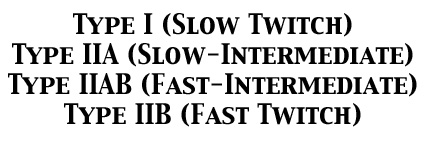Stronger Athletes
Mystery Guest and Some More on Muscle Fiber Recruitment
April 29 "Every generation has the obligation to free men's minds for a look to new worlds." - Ellison Onizuka
Mystery Guest
 This week's
mystery guest is not a strength coach. He "played linebacker and tight
end as a senior for Oceanside High School. He earned CIF San Diego
Section defensive player of the year, all-state and USA Today All-USA
honorable mention as well as North County and Avocado League offensive
player of the year. He was named to California's All-Academic team with
a 3.6 GPA.
This week's
mystery guest is not a strength coach. He "played linebacker and tight
end as a senior for Oceanside High School. He earned CIF San Diego
Section defensive player of the year, all-state and USA Today All-USA
honorable mention as well as North County and Avocado League offensive
player of the year. He was named to California's All-Academic team with
a 3.6 GPA.
As a pro player, he established a charitable organization designed to benefit local San Diego youth programs. In 1994 he was named the True Value Hardware NFL Man of the Year.
In 1997 his bar & grill was voted "Best Sports Bar" by the San Diego Restaurant Association. And he trains in a Non-Olympic training program.
**Note** Much of this bio was taken from another web site. We will give credit on Friday.StrongerAthletes.com Classic: Fiber Recruitment
The time has come for us to revisit some fundamentals of a safe, productive, and efficient training program. As our readership grows we are receiving a lot of e-mails asking us to defend our views against using Olympic lifts to train traditional athletes. This article explains the Principle of Fiber Recruitment, which is a basic element in terms of developing the quick twitch muscle fibers. This article first appeared in December of 2001....
Muscle fiber is recruited in a certain way during a set in any exercise. There are 4 types of muscle:

To illustrate when an athlete trains to failure on the bench and happens to reach failure on the 8th repetition, the first 2 reps have trained the Type I fibers, the 3rd and 4th reps have trained the Type IIA fibers and so on.

Matt Brzycki, Coordinator of Recreational Fitness and Wellness Programs, expresses a concern over the misconception that quick lifts can defy the fiber recruitment pattern. "It is believed that explosive movements [power clean, etc..] will somehow bypass the Slow Twitch fibers and target the Fast Twitch fiber population, which would be a clear violation of the orderly recruitment pattern suggested by Henneman’s Size Principle of Fiber Recruitment."
In an Olympic movement such as the power clean, Type IIB fibers do not get trained to the fullest extent because failure was not reached in any particular muscle. The momentum of the clean reduces the intensity of the exercise, which takes stress off the muscle never allowing the muscle fibers to get fully exhausted.
Tim Swanger, Strength Coaches at the University of Cincinnati, Mike Bradley, former Strength Coach at Stanford University, and Steve Murray, Strength and Conditioning Coach at the University of Toledo, give a proper analogy of this principle. "As fatigue sets in on the playing field, you are gradually bringing more fibers into play. It could be during a long drive, the fourth quarter, or halfway through practice. If your training consists of a few heavy reps or stopping your exercise short of fatigue, you’ll eventually be using muscle fibers on the field that you didn’t strengthen in the weight room."